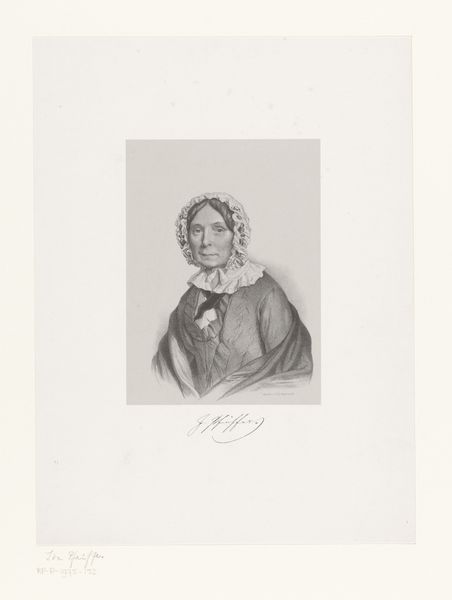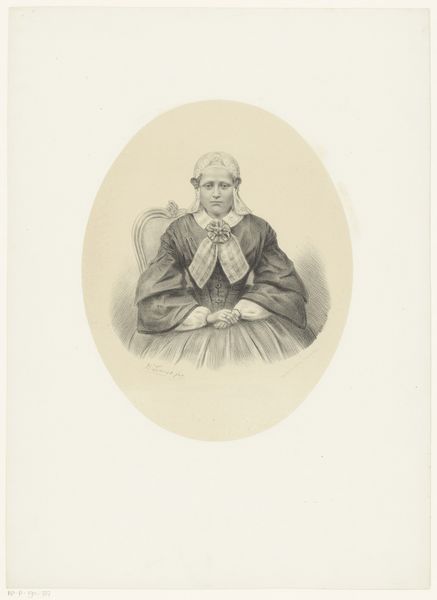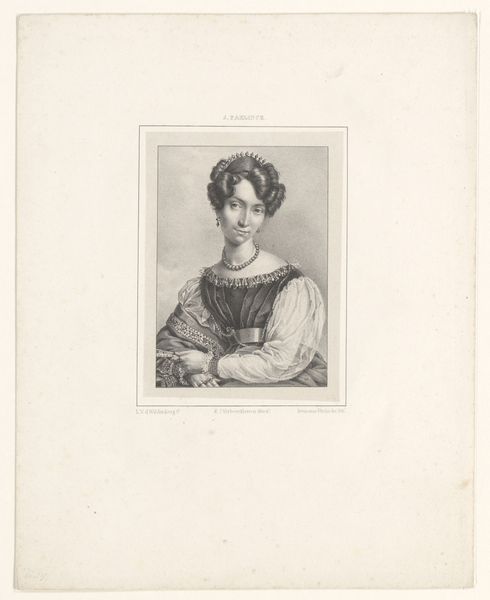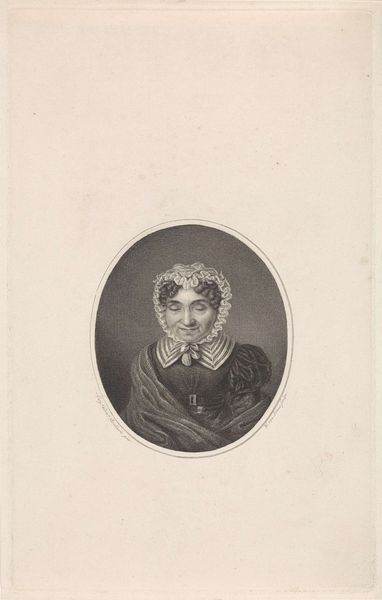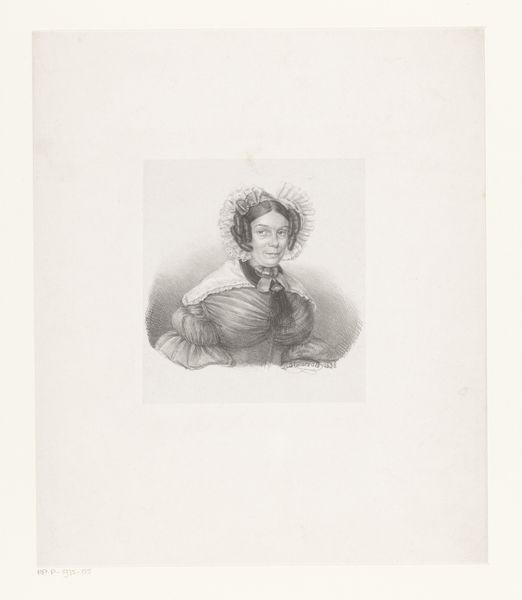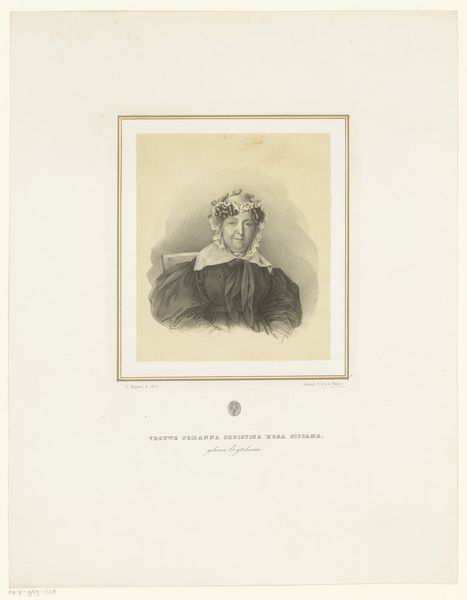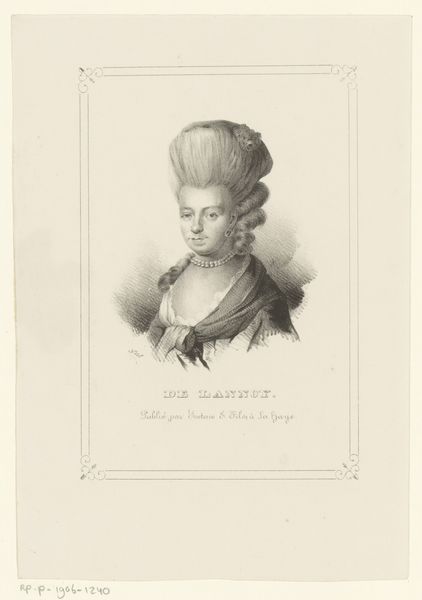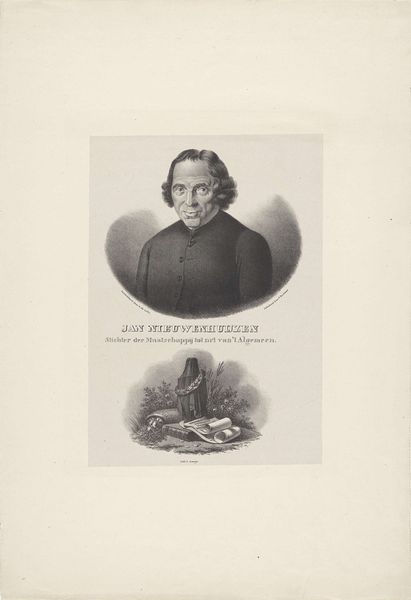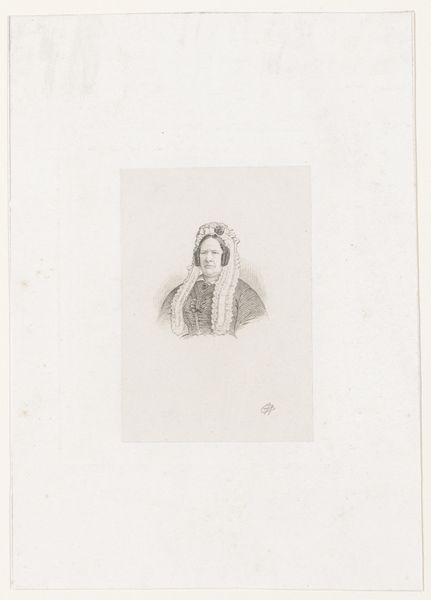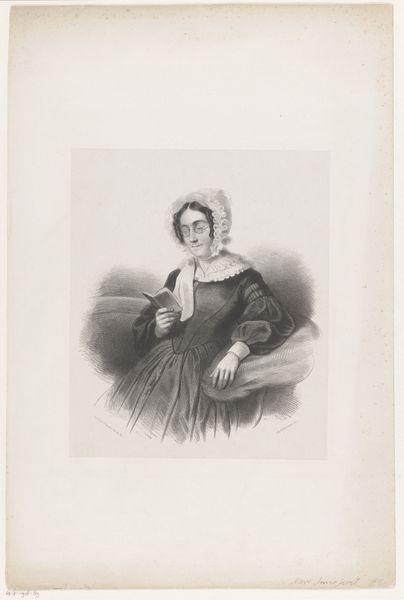
Portret van Sophia Margaretha Frerichs, echtgenote van Johannes Buys 1836
0:00
0:00
dirkjurriaansluyter
Rijksmuseum
engraving
#
portrait
#
dutch-golden-age
#
old engraving style
#
pencil drawing
#
genre-painting
#
engraving
#
realism
Dimensions: height 302 mm, width 247 mm
Copyright: Rijks Museum: Open Domain
Editor: So, this is "Portrait of Sophia Margaretha Frerichs, wife of Johannes Buys," an engraving by Dirk Jurriaan Sluyter from 1836. There's a kind of quiet dignity in her gaze that I find striking. How do you interpret this work? Curator: This piece really speaks to the position of women in 19th-century Dutch society. Look at the intricate details of her cap and dress. It signals a certain level of economic standing, but it also acts as a kind of uniform, defining her role primarily as a wife. Do you think her expression conveys any sense of individual agency or resistance within those constraints? Editor: I see what you mean about the "uniform," and I hadn't really considered that. I think there's a slight hint of defiance in her eyes, maybe a quiet assertion of self beneath all those layers of societal expectation. Curator: Exactly! And the engraving technique itself reinforces this. It's precise, controlled—much like the expectations placed on women at the time. The limited tonal range could even be interpreted as a metaphor for the restricted scope of their lives. Editor: That's fascinating, connecting the technique to the social context. I was so focused on the realistic details that I missed those layers. Curator: Think about the power dynamics at play. Who was commissioning these portraits? And what message were they intended to send? This engraving becomes a site where we can examine those complex questions of gender, class, and representation. Editor: It's amazing how much a single portrait can tell us about a whole era. Thanks, this gives me a lot to think about! Curator: Indeed, and hopefully encourages you to question what is *not* immediately visible. That's where art history really starts to sing!
Comments
No comments
Be the first to comment and join the conversation on the ultimate creative platform.


